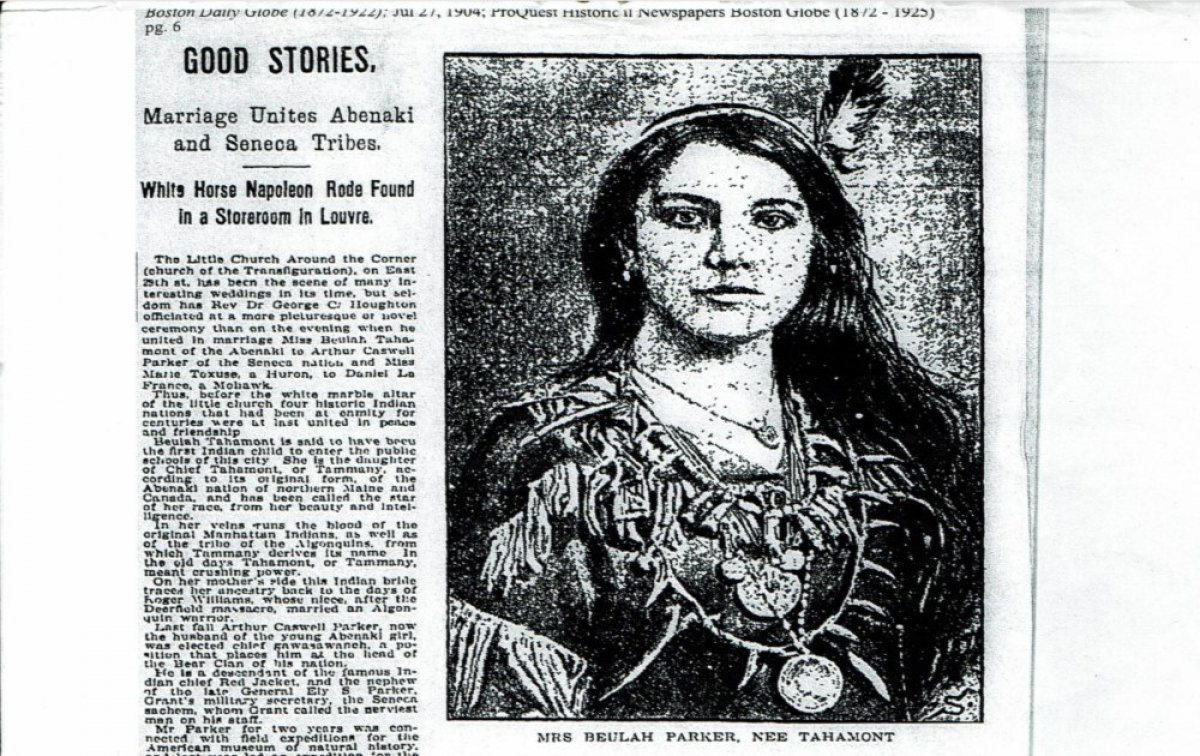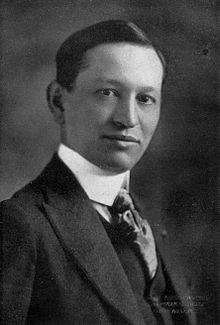July 20, 2018
Two Weddings, Four Tribes and a Discovery

Transfiguration has had a long history of weddings as far back as the turn of the twentieth century. Couples traveled from across the country and overseas to have their marriages celebrated at “The Little Church” because of its romantic history.
On one evening in April 1904, two couples, from four Native American tribes, had their marriages solemnized by the second Rector and served as witnesses for each other’s marriage. I wondered how this had come about, and searched the parish archives for an answer. The four young people were Beulah Tahamont of the Abenaki tribe marrying Arthur Caswell Parker of the Seneca nation. Daniel La France of the Mohawk tribe married Marie Toxuse of the Huron tribe. An article in The Boston Daily Globe (now The Boston Globe) characterized the event as follows: “thus four historic Indian nations that had been at enmity for centuries were at last united in peace and friendship”.
That still didn’t answer my question as to why they had chosen the Little Church. Who were they and what was their connection to the parish?
Beulah’s story was easiest to trace, as she had been a protégé of Mrs. Harriet Maxwell Converse, someone deeply involved in Native American affairs and who, at her death in 1903, was eulogized by representatives of several tribes as “The Great White Mother”. Through Mrs. Converse, Beulah and her younger sister attended public school in New York, the first Native Americans to be so admitted.
Beulah’s father Elijah, was known as "Dark Cloud" Tahamont and her mother Margaret as “Dove Eye” Camp. They were actors in the early movies of D.W. Griffith, made then in New York and New Jersey, before he moved his movie making to California. Later, Beulah would go to California and would feature in some of the movies. Was it the acting connection that led Beulah and Arthur to Little Church?

Arthur Caswell Parker was the great nephew of General Ely Parker, a military strategist under General Ulysses S. Grant. It was through the influence of General Parker that Mrs. Converse took up the work of supporting Native American causes and as a frequent guest in her home, Arthur would have met Beulah there. Arthur Parker was an archaeologist and museologist, working with some of the leading names of that field such as Mark A. Harrington. Arthur worked on anthropological projects for the Peabody Museum of Harvard and the American Museum of Natural History here in New York, and was briefly a reporter on the New York Sun.
We know little of Daniel La France, and even less about Marie Toxuse, but Daniel was unusual in that his father was a medicine man for his tribe, and he received an education off the reservation. His Native American name was Ah-nen-la-deni, and La France published a book on his experiences at boarding school in Pennsylvania and his life following that in a book called An Indian Boy’s story.
As I looked through documents about the history of the tribes, I came across material about the missionary work by the Episcopal Church among the tribes. In fact, our parish was where many of the meetings of clergy to discuss ways to support the missions to the Native American areas took place. During the years from the 1860’s to 1880’s, Fr. Houghton generously gave the use of the school room for these meetings and served as the Chaplain to the committee.
Contributions were raised and helpful items made or purchased and sent to the various Native American areas to be used in schools or hospitals. Those efforts which brought together clergy from dioceses west of New York and into Dakota, culminated in the establishment of the Niobrara Convocation in 1870. This is an annual gathering in South Dakota which brings together Native Americans from different tribes and reservations, the Presiding Bishop, other Non-Indian Episcopalian clergy and persons from other denominations.
I wonder if the four young people who came to be married at our church had heard of Transfiguration’s work in support of the Native American missions. Or was it the relationship with the acting profession? Or maybe both? Although we will never know with certainty, I am grateful that my curiosity led me to discover yet another strand in the diversity and inclusiveness for which Church of the Transfiguration is known.
